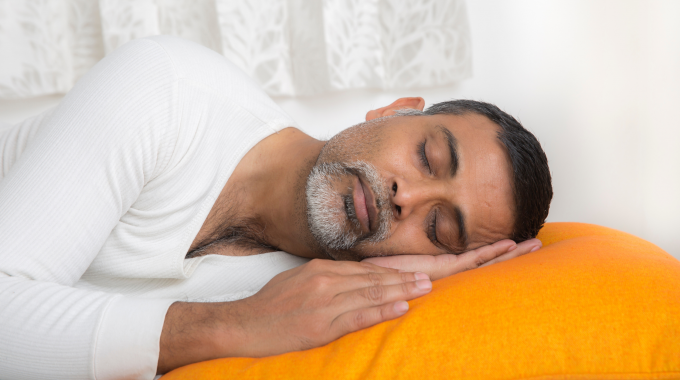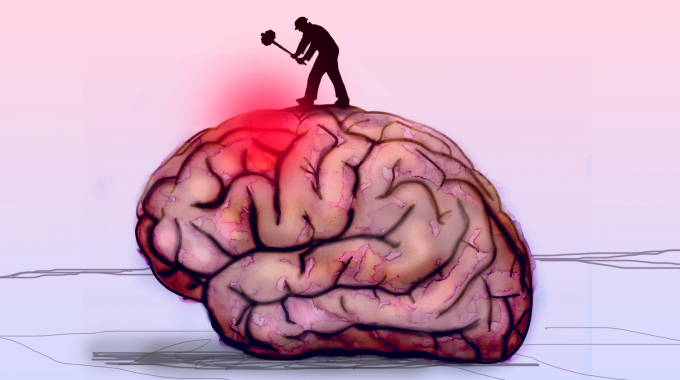Got a few extra guests descending for Christmas? That usually means a bigger bird, more…

Struggling to Sleep?
How to get the best out of your sleep
What is the best mattress or pillow? How can you adjust your sleeping position if you are in pain? What is the best position to sleep in?
These are a few of the questions I get asked by clients on a regular basis.
From a Chiropractors point of view, sleep is incredibly important. Sleep is recovery and healing time for your body and can have a huge impact on injury recovery. This is because it is often difficult to achieve good sleep if you are in pain.
Survival Mode
If you’re not getting good sleep on a regular basis, your body will be more prone to injury and illness. Your body goes into survival mode to get you through the day, which means you are in your stress response. This dials down your immune system because it is not important in that short term need for survival.
Long term and consistent stress can increase your risk of illness and injury. This can make it harder for you to get good quality sleep because you will have adrenaline flooding your body. The adrenaline will prevent sleep occurring because your body thinks you are in danger.
Mattresses
Which mattresses and pillows are the best to use? Sadly, there is no quick easy answer to this – it takes a bit of research on your side.
Choosing a mattress and pillows is quite a personal decision – some prefer soft, some firm. The best way to know is to try before you buy! Visiting showrooms is a great way to choose what is best for you. Some mattress companies now offer deals where you return the mattress after a certain timeframe if that mattress doesn’t suit.
The idea of a cosy, soft bed may be idyllic, but it may also increase back pain. It is really important to try your mattress before your long-term commitment. The fantasy bed you have in your head, may actually cause you more back pain.
One note of caution I always mention is memory foam. A lot of people love their memory foam beds but, in my experience, you can sink into them too well. For example, if you are suffering with back pain, it’s likely that you struggle with turning in bed. A memory foam mattress can increase the difficulty of this because you have so nicely sunk into it!
Pillows
Size is the key rather than density when it comes to pillows. The size you want depends on the position you like to sleep in:
Laying on your front = no pillows.
Laying on your back = as flat as possible or none if you’re able.
Laying on your side = a pillow or pillows the width of your shoulder so that your neck is in its neutral.
Sleeping positions
We should all be able to sleep in any position without any pain. But as a lot of us suffer from stiffness in one area or another, we want the position that is best for our body.
Back sleeping
Back sleeping is by far the least stressful position to sleep in for your body. If you feel any tension in your lower back whilst trying to sleep on your back, put a pillow under your knees to create a slight bend. This takes the pressure off the lower back because it won’t be as stretched out.
Putting a pillow under your knee or knees will also help if you have knee pain. The slightly bent position in the knee opens the joint to its greatest capacity. This takes pressure off if there is any swelling in the area.
Back sleeping is also good for preventing wrinkles! There is no pressure or dragging on the skin of the face during the night. A reason to sleep on your back, if ever I heard one!
Side sleeping
Side sleeping comes in second as a sleeping position. My experience in clinic suggests that this is the most utilised sleeping position. Shoulder pain and lower back pain can be issues when sleeping on your side. Pressure on the shoulder you are lying on can create discomfort or tension, but this can usually be reduced with the correct pillow configuration.
If the uppermost shoulder is uncomfortable you can support it with a pillow or something similar tucked in front of you. A recent client told me she manages her hypermobile shoulders by continuing to sleep with a teddy tucked in front of her! She’s tried various more “grown up” pillows but none are as effective and perfectly sized as her teddy! She continues to use it and says her husband has fully excepted “ted” in bed with them every night!
Side sleeping can also cause discomfort in the lower back and pelvic area. This is because the legs are narrower than the pelvis. When you lie on your side with your legs together, the pelvis will roll forward slightly to incorporate the size discrepancy. Putting a pillow between your thighs will straighten out the pelvis and prevent this happening. If you put a pillow between your legs then you should also consider putting something between your feet and ankles. This will avoid moving the stress to another area.
Front sleeping
Front sleeping can be beneficial for opening your airways and can often help you sleep more soundly. However, most people have a level of stiffness in their neck these days created by our modern society of sitting at desks and looking at our phones. Sleeping on your front creates a stress on the neck because your head is turned to one side. This is the reason I recommend no pillow when front sleeping. With a pillow added, you would then increase the stress by adding in extension of the neck as well.
What if you really want to sleep on your front but it creates discomfort in your lower back? You can put a flat pillow under your lower abdomen and pelvis to reduce the curve in the lower back.
We all have our favourite sleeping positions that we love. However, if you find you get discomfort from yours then it is possible to train yourself to sleep in a different position. If you are struggling with your back during sleep, feel free to get in touch here.




Comments (0)